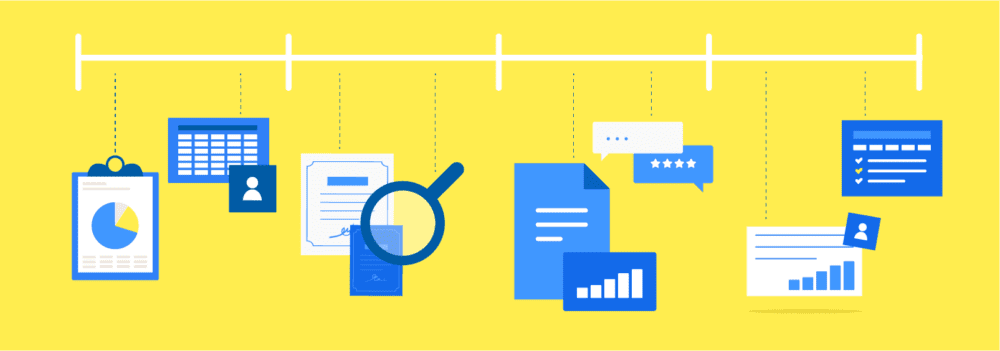Everything you need to know about audits
Audits are a powerful way to check the quality or integrity of your operational processes, but also to demonstrate that you meet certain industry-specific standards, quality levels, or legal requirements. So, what is an audit? An audit is a regular, systematic inspection performed by an auditor. Using checklists and conducting interviews, auditors determine whether a business has its affairs...


Audits are a powerful way to check the quality or integrity of your operational processes, but also to demonstrate that you meet certain industry-specific standards, quality levels, or legal requirements.
So, what is an audit?Copied
An audit is a regular, systematic inspection performed by an auditor. Using checklists and conducting interviews, auditors determine whether a business has its affairs in order and under control, in accordance with relevant standards, requirements, and/or objectives. They then present their findings in an audit report.
Audits might cover an entire organization or perhaps a particular department or just an individual process. For example, an audit conducted by an accountant would look at a company’s annual reports, statement of accounts, etc.
But why conduct audits?
There are many reasons why you’d want to conduct an audit, but these are the most common:
- to reassure customers, suppliers, or even yourself
- to check the effectiveness of management/safety measures
- to verify the reliability of accounting/reporting procedures
This last reason is predominantly the domain of financial audits.
What are the benefits of audits?
Regularly auditing yourself, or being audited, has numerous benefits:
- detect bottlenecks, problems, risks, or errors in a process or quality management system faster
- implement improvements based on these new insights more simply
- get better feedback about the effect of any measures taken and improvements made
- verify and demonstrate compliance with relevant industry-specific standards and legal requirements – also good for your company’s image, reputation, and bank account (fewer or no fines)
Are there different types of audit?Copied
Yes. There are indeed several types of audit. Let’s take a closer look at some of them.
1. Internal audits
An internal audit is a regular, systematic inspection performed by someone from within your organization.
It’s primarily intended as a management tool to help identify any risks, bottlenecks, or improvements.
When performed well, they often provide a wealth of useful information and insights:
- Because they serve as an additional quality control step, you’ll be able to pinpoint the root causes of any operational and strategic problems. Knowing this, you’ll be better able to take your processes to the next level.
- Internal audits also highlight options to make savings.
- By conducting internal audits on a regular basis, you’ll be demonstrating to your staff and the outside world that your organization takes issues such as quality, health, safety, and/or the environment seriously.
Read our article, 10 tips for successful internal audits, to find out more.
2. External audits
An external audit is a regular, systematic inspection performed by someone from outside your organization. Generally, this auditor would be from a certification authority, but sometimes he or she could be from a trade or industry association, or perhaps even a company interested in taking over your business.
External audits focus on inspections of either an entire organization (certification audit) or a part/process of the organization relating to a specific product (supplier audit). Accreditations are also a form of external audit.
Often, companies use external audits as a quality management tool to demonstrate that they’re both reputable and reliable.
Read our article, External audits – what’s involved and how to prepare, to find out more.

What do audits involve?Copied
Now we know what an audit is and its purpose, what do they actually involve in practice? Every audit is different, but even then they all share several common characteristics:
1. Prepare
As with most things, an audit starts with proper preparation and planning, i.e. deciding which processes or parts of your business you’ll be inspecting, when, and how. This generally involves examining the results of previous audits.
2. Perform
Once you’ve finished preparations, it’s time to perform the audit. The auditor (internal or external) then inspects whether the company’s operational and/or production processes are safe and effective, whether it meets relevant certification standards, or whether its financial accounts are in order.
Auditors look for evidence and gather information from a range of sources, for example documentation, registration forms, observations, and interviews.
Once the auditor has gathered all the required information, he/she then checks and evaluates their findings. Does the information tally with what employees are telling them? Does the information pinpoint anything that’s below par within the company?
3. Publish
The auditor then compiles all his/her findings into an audit report. This report details the issues discussed and focuses on important areas for attention or improvement. The auditor then discusses the report’s conclusions with the key managers within the organization.
4. Review
The final phase involves reviewing the measures recommended by the auditor. For example, did the suggested improvements actually have the desired effect? This review is sometimes in writing, but often takes the form of a repeat or follow-up audit.
Tips for preparing for an auditCopied
You’ve got to be well prepared to pass an audit, especially external audits, which are often a source of stress. Read the tips below to pass your next audit with flying colors:
1. Foster the right mindset
Passing or failing an audit often depends on your organization and its employees’ mindset. Don’t be afraid to look critically at your own processes and methods, but be equally objective and critical of the auditor’s findings. You’d be amazed at how valuable and productive these discussions can be. A critical mindset also involves asking the right questions. After all, you’ll never learn anything new if you don’t ask.
2. Assign individual, team, and departmental responsibilities
Delegating responsibility for results is one of the best ways to safeguard consistent quality levels. Doing so makes it a daily focus instead of an externally imposed task.
3. Keep it sweet and simple (KISS)
You don’t have to make auditing super complex to gain meaningful insights and achieve even better results. This certainly applies to internal audits. Employees are often more than capable of carrying out these internal inspections themselves and, by doing so, they maintain control over their own work. You can often replace complicated laboratory analyses with simpler and more effective inspection procedures that operators can perform themselves.
4. Map your skills
Being able to visually present your employees’ skills, competences, and qualifications at a glance is one of the best ways to sail through an audit. Skills matrices are undoubtedly the best option. Keeping track of skills in such a matrix allows you and your employees to see at a glance what everyone is capable of. This is particularly important because this information forms the basis for optimizing your operational processes.
Read our article, Everything you need to know about skills matrices, to find out more.
Pass your next audit with flying colors thanks to AG5Copied
Audits involve a lot of time and effort. And external audits can be particularly stressful and have a major impact on your company’s image and reputation. Thankfully, we have the solution – AG5 has you covered. Our software stores all the information you could ever need in one central, cloud-based location. With just a few taps of your screen, you can show your auditor all the information they’ll need.
Book a free demo to find out how AG5 can help you or experiment with one of our Excel skills matrix templates to get to grips with the basic concepts.
